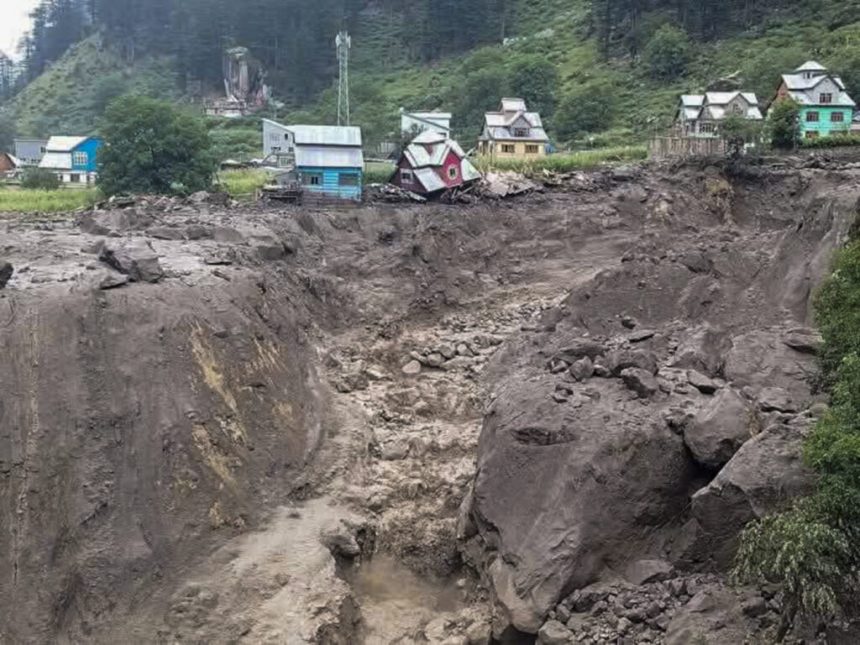With the monsoon remaining active across the Himalayan belt, climate experts warn that Jammu and Kashmir is facing a growing threat from extreme weather conditions, particularly cloudbursts, which have intensified both in frequency and impact over the past decade.
According to data shared by the Meteorological Department, 168 cloudburst incidents have been recorded in J&K between 2010 and 2022, with the number expected to rise in the coming years due to climate change.
Dr. Mukhtar Ahmad, Director of the Meteorological Centre in Srinagar, said the region’s orography, the impact of mountainous terrain on weather patterns, is a key factor contributing to sudden, localized cloudbursts.
“As global temperatures rise, even by a single degree, the atmosphere holds more moisture,” Dr. Mukhtar told Rising Kashmir. “When hot, humid, moisture-laden winds reach the Himalayas, they’re forced upward by the mountains. This rapid uplift and cooling causes the clouds to condense quickly, releasing intense rainfall in a very short span, what we define as a cloudburst.”
He warned that even dry or shallow streambeds, inactive for years, must not be ignored, as they can rapidly flood during such extreme events. “People must remain vigilant around these areas, especially during weather alerts,” he added.
He attributed the phenomenon primarily to Orography — the influence of mountains on weather. Orography refers to the way moist winds, when forced to rise over steep mountain slopes, cool rapidly, condens, and release sudden heavy rainfall. “That’s why the Himalayan region, particularly Jammu and Kashmir, is highly prone to cloudbursts,” Dr. Mukhtar said.
Contrary to public perception, experts argue that cloudbursts are primarily meteorological in nature and not directly caused by deforestation.
A climate expert from SKUAST-Kashmir emphasised, “While deforestation impacts the environment in other ways, linking it directly to rising cloudburst incidents is misleading. The key drivers are orographic lift and increased atmospheric moisture due to global warming. In fact, afforestation efforts have also been underway, balancing some ecological loss.”
Independent weather expert Faizan Arif supported the view, adding that the southwest monsoon is now carrying significantly more moisture due to warming seas and atmospheric instability.
“We are witnessing an increase in cloudburst incidents and this can be linked to the increasing moisture content in the atmosphere due to global warming,” he said. Arif explained that the southwest monsoon winds carry heavy moisture layers, and when these collide with the higher ranges of Jammu’s terrain, the steep topography helps trigger intense downpours in a very short span of time. “By the time these winds travel further towards Kashmir valley, much of the moisture is already lost or blocked due to the mighty Pir Panjal range, which is why incidents are fewer here. Still, whenever a strong moisture surge manages to cross Pir Panjal, even Kashmir remains vulnerable,” he said.
A climate scientist from Kashmir University called the spike in extreme weather a “wake-up call for policymakers.”
“We urgently need localized forecasting tools designed for Himalayan conditions. Cloudbursts will only become more frequent. Without early-warning systems, better land-use planning, and zoning regulations, the loss of life and property will continue.”
Recent tragedies have underscored this warning. In Kishtwar’s Chisoti village, a devastating cloudburst on August 14 killed over 65 people and injured many more. Just days later, another deadly cloudburst in Kathua claimed seven lives, including five children. On Monday, a third incident struck Lolab area of Kupwara, though no casualties were reported.








